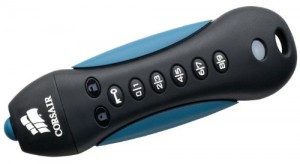Create a “Master List”
Instead, you should consider storing this sensitive data on an encrypted USB drive (see nearby photos) inside your fireproof box or bug-out bag.
For around $170, the Kanguru Defender 32 GB USB Drive is one of the most respected secure thumb drives on the market. The Defender is equipped with password protection and secure file encryption. That means, even if this thumb drive were to fall into the wrong hands, there’s still not a chance in hell that they’re going to be able to access your files.
LastPass
For a more practical, yet slightly less “cloak and dagger” solution, you can install a password guarding software such as LastPass into your browser’s toolbar.
LastPass remembers both websites and passwords you use for them, automatically verifying and matching them up, filling password fields automatically when you give it the “OK.” This feature is both convenient and it protects you from phishing scams.
With LastPass, you can sign in to your account from anywhere in the world where you have Internet access and retrieve all of your saved passwords. Plus, all of your password data is encrypted, so even if the files were somehow stolen, it would be useless.
I know you may be skeptical about relying on software to store and protect your most critical passwords. I was too… but after giving it a lengthy test-drive, I’ve come to reconsider.
Here’s what I’ve learned after using it for a year: LastPass allows me to use completely random auto-generated passwords to a level I never could have before.
Plus, your files are securely encrypted, meaning that even if they were stolen by a hacker, they’re complete gibberish without the codec. Also, did I mention it’s free?
